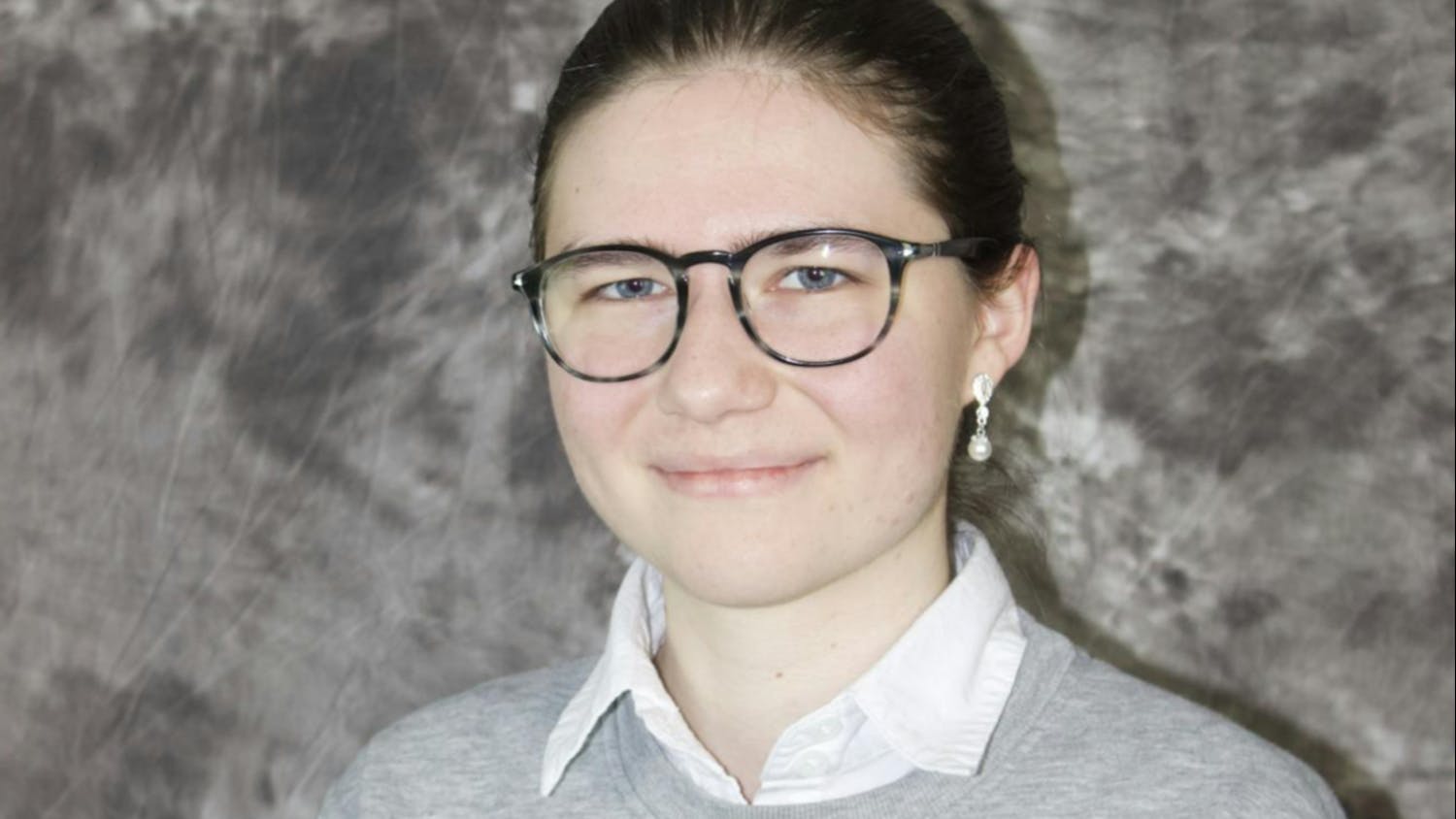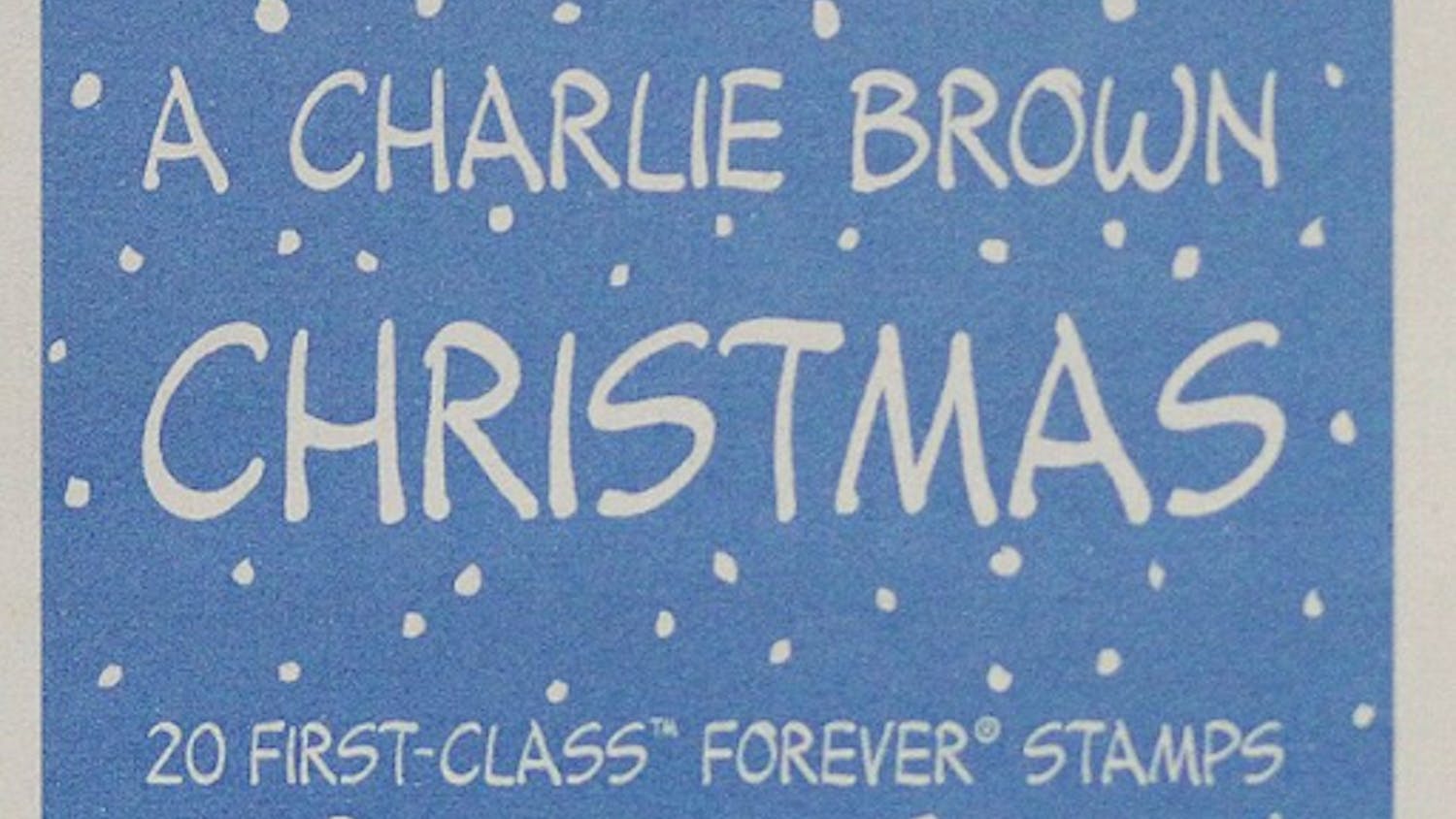Robert George doesn’t believe in the paranormal.
Hearing voices or seeing fleeting shadows in the corner of your eye? To George, those are just symptoms of carbon monoxide poisoning.
Involved in an alien abduction? That can probably be chalked up to a daunting night of sleep paralysis.
In George’s mind, everything has an explanation in the scope of the rational, but one wouldn’t know that from his artwork.
With a portfolio depicting images of a murdered boy’s ghost and a found spirit report by the supernatural investigator, Egregor, George appears to be an exceptionally strong believer in the paranormal.
His art even functions as evidence for the existence of ghosts.
Except for the fact that it is all fiction.
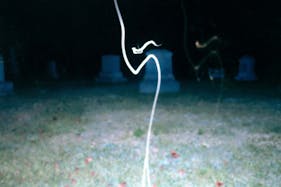
“Ghost of Glenwood,” part of Robert George’s ghost photography fiction.
George, a first-year MFA student specializing in photography, has always lived a life entrenched in skepticism for the paranormal, the spiritual and the extraterrestrial. An eclectic man with obsessive interests ranging from chess to astrology, the realm of the possible and impossible drives his artistic work. But George doesn’t use film to capture spirits on camera. Rather, he creates art with the intention of debunking ghosts, recreating paranormal evidence and even tricking others into believing his own visual stories.
“I do a lot of research and a lot of people make claims on pretty much everything that I’m making claims on [in my artwork],” George said. “I just kind of put them into a blender and get something on the other end that still feels kind of real, even though it’s complete fiction.”
In teetering the line between honesty and dishonesty, George has produced works including “In Response to Serios,” a series of thoughtographs (defined by George as photographs that “contain images which are believed to be the direct result of psychic thought phenomena”).
According to George’s website, these photographs depict the ghost of David Kreskin, a Buffalo boy who was murdered in the 1960s, over a drunken selfie of George himself.
However, David Kreskin never existed. His name derives from The Amazing Kreskin, a popular American mentalist from the 1970s. The actual boy in the image is that of George’s uncle.
Yet, not all is false in “In Response to Serios.”
“I did get drunk and take selfies with my little photo camera,” George said. “It’s like a fiction made from little truths.”
In addition to these weaving works of half-truths, George also works with fellow MFA student, Alex Cassetti, the only other first-year graduate focusing on photography. Together, the pair put together the “Ghosts of Film” exhibition in the Fall 2021 semester.
“Ghosts on Film” was a black-and-white photography series that used digital and darkroom prints to focus on the photographic past and the ways in which photography can manipulate an audience.
“The exhibition was basically a response to all the conversations we had throughout the semester, [such as] creating realities that we can use to convince our audience that what we’re doing is real, and it’s physical,” Cassetti said.
For Cassetti, his work with George in audience manipulation remains especially relevant with the rise of social media and what he dubs as “the age of misinformation.”
In working together, Cassetti and George note the ways in which their competing backgrounds aid in each other’s artistic progression.
“I can be pretty cynical about the photographic world and for George, he’s very encouraging about how to continue forward,” Cassetti said.
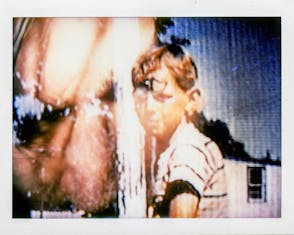
“Kreskin Thoughtograph,” a photo of Robert George’s uncle passing off as a fictional murdered child.
The differences between the pair arise from a number of factors: George’s preference for theory over technical knowledge, Cassetti’s years spent in New York as a photographer and differing concerns of photography in the “professional sense.”
“[George’s] doing the things he’s doing for his viewer to always question what they’re looking at,” Cassetti said. “I think he’s incredibly successful [at] doing that. So, I’m almost thinking about presenting my work in different ways because of his approach of ‘f*** everyone else.’”
But George’s influence doesn’t stop at Cassetti. He has also been a source of inspiration and progression for his friend and bandmate, Eric Buchbinder.
Together, George and Buchbinder form a “dark wave synthpop” band known as the Berlin Boys. With Buchbinder making the majority of the music, he found the behind-the-scenes work of recording more approachable than live performance.
“A lot of times I would lose my mind trying to figure out how we would [translate the music live],” Buchbinder said. “[Robert] would come in and just be like, ‘No, you know it’s really simple,’ and get me back in the proper direction.”
Music isn’t the only area where George and Buchbinder came together to create. From February to March 2019, the two transformed the basement of George’s parents home into their own DIY darkroom.
“The stuff we were making was just insane compared to the darkroom at UB,” Buchbinder said.
Due to the lack of a professionally controlled environment, the duo were able to garner an aesthetic influenced by expired photo paper, the use of an old pot in place of a water bath and the freedom to explore techniques such as solarizing (turning on the lights as photos are exposed).
In their photographic endeavors, George and Buchbinder have also encountered their own extraordinary sights. These were not of the ghostly sort, but the extraterrestrial.
“I do think if there’s anything that is real, there are aliens on other planets,” George said. “Have they been here? If so, I don’t know. It looks more and more like that is reality.”
While Buchbinder hadn’t seen his first UFO until taking trips with George to an overlook in East Aurora, George had his first encounter in high school.
Sitting in his mother’s car while driving on the Buffalo Skyway, a young George made out floating white lights, which first appeared to him as Chinese lanterns. Upon closer inspection, George realized the three lights were unblinking and unmoving.
“We were kind of curving on the road and watching this thing, for three or four minutes, not move,” George said, “And my mom and I are like, ‘What is going on right now?’”
Despite holding a deeper belief in the existence of aliens, pictures of UFOs are just as useful in George’s fiction as those of the supernatural. He even has plans to fabricate a model UFO with old smoke detectors.
However, George has found greater difficulty in manipulating UFO sightings than those of ghosts.
“UFO people, I think, are more discerning than ghost people,” George said after Reddit users quickly debunked his artificial UFO pictures.
Still, George’s beliefs don’t stop there. Weary of psychics and other aspects of spiritualism, George does participate in the practice of tarot, as well as subscribing, in part, to astrology.
“I think for him, he both believes it and also doesn’t,” Cassetti said. “But he’s interested in how these ideas can lead into cult-like behaviors, or some kind of spin-off identity that people can go into and be trapped in.”
Regardless of the extent of his beliefs, nearly every new area of interest for George seeps into his artwork and mentality. Art involving tarot can be found side-by-side with palmistry, an area that George describes as a “slippery slope” into phrenology, and his studio brims with a number of collected items from a Twin Peaks vinyl record to Alfred Hitchcock children’s books.
“I think it’s really amazing the way he takes those little interests and fine tunes them,” Buchbinder said. “That’s the way I viewed the tarot, like a little interest. I didn’t expect him to make it such a focal point of his work, which I think is just awesome.”
Kara Anderson is a senior arts editor and can be reached at kara.anderson@ubspectrum.com
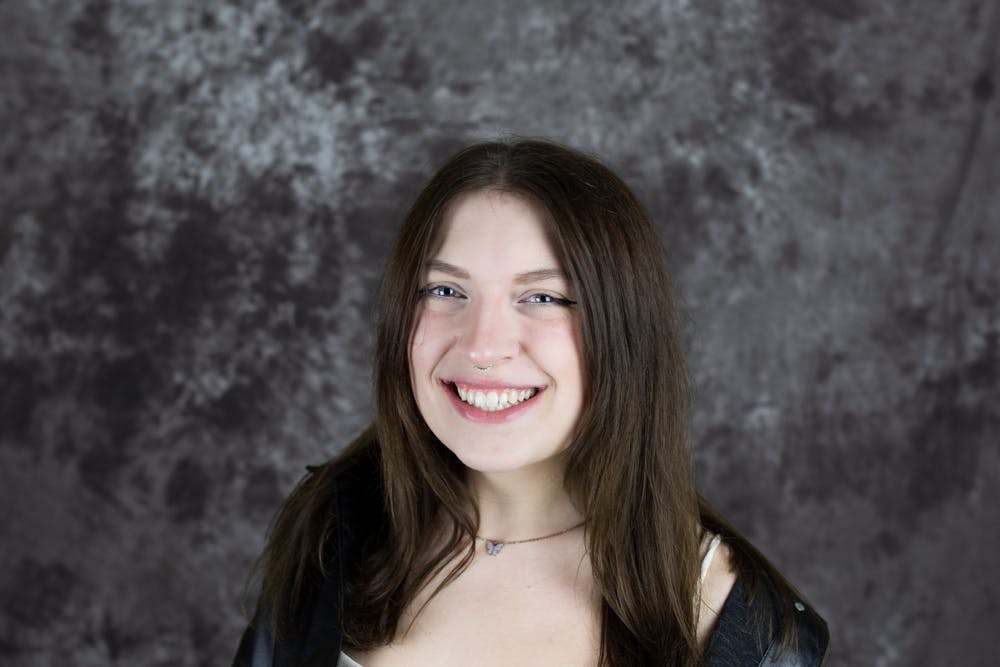
Kara Anderson is a senior arts editor at The Spectrum. She is an English and Spanish double major and is pursuing a certificate in creative writing. She enjoys baking chocolate chip cookies, procrastinating with solitaire and binging reality TV on the weekends.



